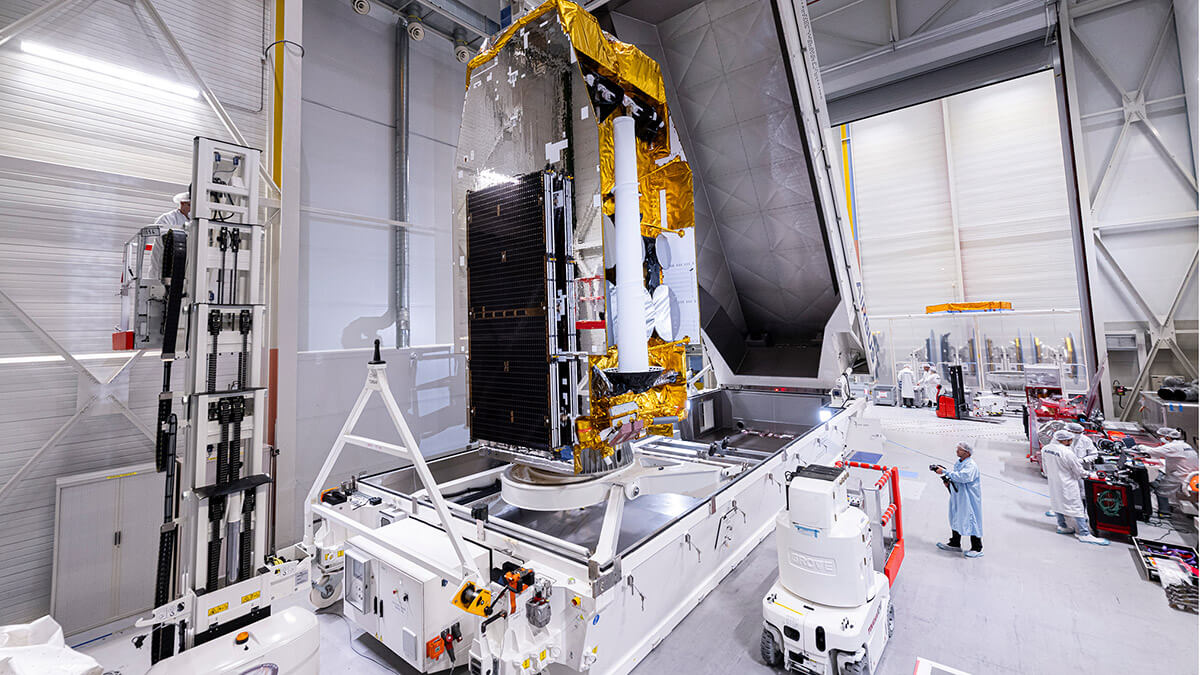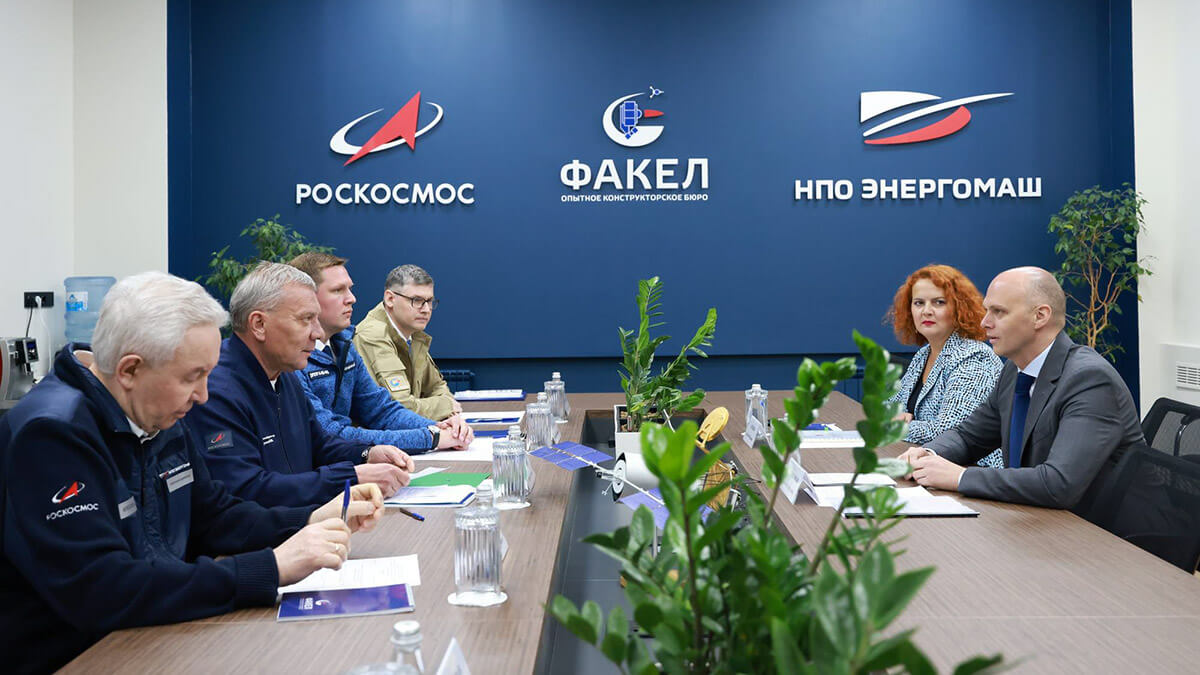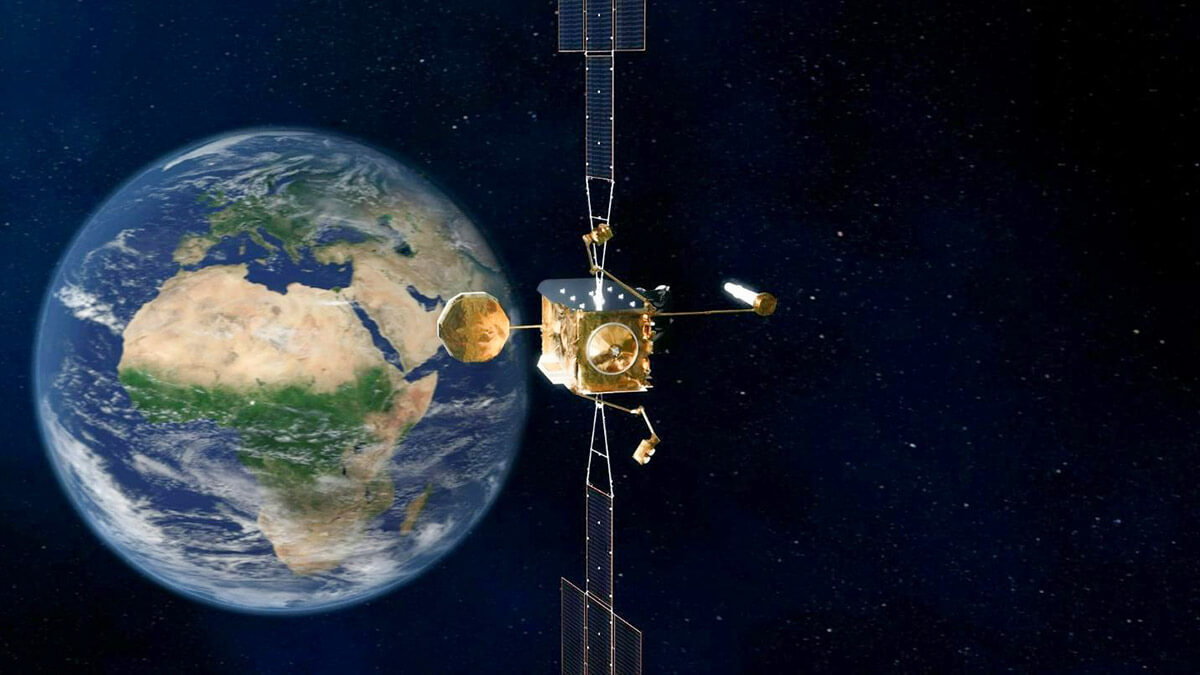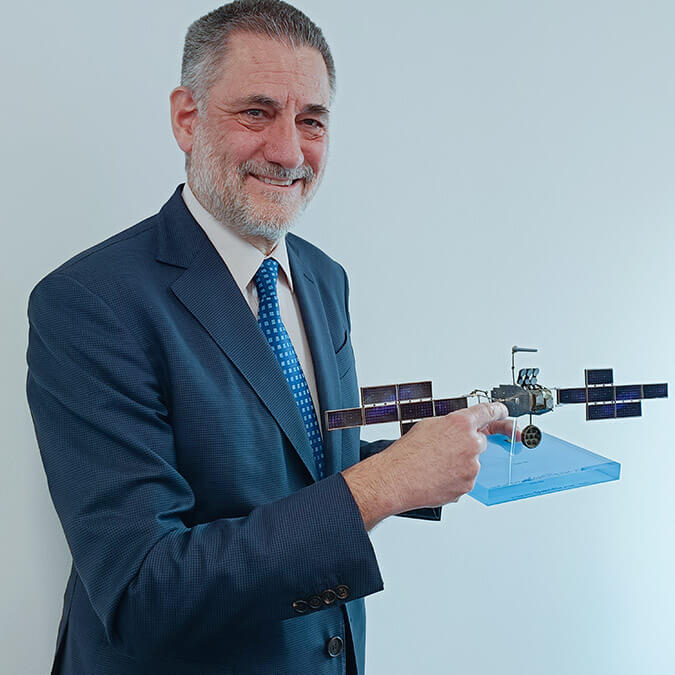- Replacing Russian electric motors in the middle of the programme
- Protected against electromagnetic pulses from nuclear explosions
Spainsat NG-1, Spain’s first new-generation secure communications satellite, is now at the US space base at Cape Canaveral, Florida. It was a moment long awaited by Hisdesat, its owner, the government services company captained by Miguel Ángel García Primo since October 2019.
Today, 13 January, the launch campaign has just begun and is in the hands of Delta Unit 45 of the US Space Force, responsible for firing the rockets from Cape Canaveral. The campaign is due to culminate on 29 January at 05:00 Spanish time with the launch of Spainsat NG-1 aboard a Falcon 9 rocket from Elon Musk’s SpaceX company. Due to the time difference, in Florida it will be 11:00 a.m. on the previous day, 28 January.
The complex Spanish device arrived at the main space flight centre in the United States on the afternoon of 9 January, after leaving the Airbus Space Systems facilities in Toulouse (France) in the early hours of that day to travel in a special gondola to the nearby Blagnac airport. There, it boarded and crossed the Atlantic to America in a large four-engine Antonov An-124 aircraft belonging to the Ukrainian company Antonov Airlines, which transports very bulky and heavy cargo, especially large satellites, by air.

If all goes according to plan, the launch of Spainsat NG-1 into orbit will have taken ‘about a year’, admits Hisdesat’s general manager, García Primo, who argues that its construction has taken place in ‘rather unfavourable’ environments, first due to the confinement caused by the COVID-19 pandemic and then because of the Russian invasion of Ukraine. Both fatalities, especially the war in Eastern Europe, ‘caused us to have a complete breakdown of supply chains’.
This latest supplier disruption ‘occurred just as we were in the process of procuring electronic elements, parts and components for the satellites’. The consequences were that ‘delivery times doubled and in some cases even tripled, as did prices’.

Replacing Russian electric motors in the middle of the programme
García Primo gives as an example of … and now what do we do? the small but critical and proven four SPT series electric motors that were to power the Spainsat NG-1, powered by Xenon gas and contracted out to a Russian company. To the Kaliningrad-based OKB Fakel Design Bureau, headed by engineer Guenadi Abramenkov and belonging to the state-owned industrial conglomerate NPO Energomash, a group specialising in propulsion systems for aircraft, missiles and rockets.
The sanctions imposed by Brussels and the Spanish government discouraged the purchase of the SPT boosters and, ‘in the middle of the programme, the model had to be changed, which was no easy task’. But Hisdesat found the alternative in an equivalent electric motor belonging to the PPS family of the company Safran Spacecraft Propulsion, a subsidiary of the French industrial multinational Safran.
Despite the setbacks and challenges that have had to be overcome, García Primo dares to point out that the Spainsat NG programme ‘is a huge success’. In an overall assessment of what the project represents as a whole, he judges it to be ‘the most important project Spain has ever undertaken’. Firstly, ‘because of its high budget’ which, from the start of the design and development work in July 2019 and throughout its estimated 15-year life, ‘will reach an economic volume in the order of 2,000 million euros’.

Also, because of its large dimensions, the innovative technology it incorporates and the high degree of contribution of the Spanish space industry, ‘whose participation has been 45 percent in the satellites and practically 100 percent in the rest of the activities’. He gives as an example the new facilities for its control and monitoring from the ground that have been built in Hoyo de Manzanares, in the vicinity of Madrid, full of national technology.
The head of Hisdesat has no qualms in emphasising that the Spainsat NG-1 and its twin NG-2 – in their final stages of development – are ‘the most advanced secure communications satellites ever built in Europe, and are probably on a par with the most important satellites being built in the world, that is, in the United States’.

Protected against electromagnetic pulses from nuclear explosions
García Primo stresses that it is a ‘completely new’ device: it is software-defined, its technology is completely digital, its propulsion is completely electric. And, above all, it has high-powered, highly efficient active transmission and reception antennas that are tamper-proof and jamming-proof, the origin of which can be geolocated, ‘so I can say that there are no similar ones in Europe and they have always been the critical path of the programme’.
The aforementioned antennas, the jewels of the programme, are the fruit of ‘Spanish technological sovereignty, which is reverted into strategic sovereignty thanks to the fact that we have been investing in this technology for 40 years,’ he stresses. In addition, ‘it is protected against the HANE effect’ (High Altitude Nuclear Explosions), which is caused by nuclear explosions in the upper layers of the atmosphere, ‘which propagate over a great distance, 360 degrees, and whose thermonuclear wave charges everything in its path’.

Aware of the advanced capabilities of its new satellites and the interest they have aroused in third countries, Hisdesat has had to reinforce its internal security criteria, both in hiring new personnel and in safeguarding documentation. Data relating to the technology, algorithms and performance of the active antennas – which are the industrial property of the company – are classified with the highest level of secrecy.
What is the status of its twin brother, the Spainsat NG-2? It is at the Airbus Space Systems facilities in Toulouse and its development ‘is progressing well’, summarises García Primo. It is undergoing final checks and has been undergoing tests in the thermal vacuum chamber since 9 January to validate the behaviour of its on-board systems in the critical environmental conditions of outer space. Liftoff of NG-2 is scheduled for September or October this year, also from Cape Canaveral, using a Falcon 9 rocket.

Given the high performance of the Spainsat NG-1, in addition to offering encrypted communications to the Spanish Ministries of Defence, Interior, Foreign Affairs and other national organisations, once in service it will also provide encrypted communications to official institutions in the United States, Portugal, Norway ‘and shortly to other countries’. As the new devices meet NATO’s stringent requirements for secure communications, the company aims for the Alliance to use secure communications packages from the new satellite, which it has so far contracted with institutional and private operators in the United States, France, Italy, Luxembourg and the United Kingdom.
link


